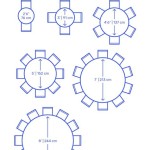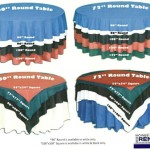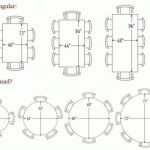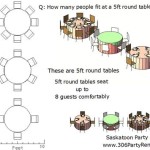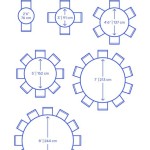Quilted Table Runner Patterns Using Charm Packs
Charm packs, those delightful bundles of pre-cut fabric squares, offer a convenient and visually appealing way to dive into quilting projects. Their coordinated color palettes and manageable size make them particularly suited for smaller projects, such as table runners. A quilted table runner using charm packs allows quilters to explore different patterns, experiment with fabric combinations, and create a functional and decorative piece for their homes. The uniformity of size within a charm pack streamlines the cutting and piecing process, contributing to quicker completion of projects.
The inherent accessibility of charm packs makes them an excellent resource for beginner quilters. The precut nature eliminates the need for precise measuring and cutting, a potential hurdle for those new to the craft. Experienced quilters also appreciate charm packs for their time-saving efficiency and the opportunity to utilize fabric collections without investing in larger cuts of yardage. The versatility of charm packs, coupled with the wide array of available patterns, ensures a project suitable for every skill level and aesthetic preference.
Exploring Design Possibilities with Charm Packs
The inherent regularity of charm pack squares unlocks a vast array of design possibilities for table runners. The most straightforward approach involves simply stitching the squares together in rows and columns to create a patchwork effect. However, even within this simple framework, variations can be introduced by strategically arranging the squares to create visual patterns, such as chevrons, diamonds, or even more complex geometric designs. The color arrangement within the charm pack can be exploited to create gradients, contrasting blocks, or randomized patterns for a more eclectic look.
Beyond simple patchwork, charm packs can be incorporated into more intricate quilt blocks that are then repeated along the length of the table runner. Some popular block choices include nine-patch blocks, four-patch blocks, and even more complex designs like pinwheels or stars. These blocks can be pieced together using charm squares alone or in combination with other fabrics to add contrast and visual interest. Adding sashing – strips of fabric between the blocks – can further define the individual blocks and expand the overall size of the table runner.
Another design possibility lies in cutting the charm squares into smaller shapes, such as triangles or half-square triangles (HSTs). These smaller units can then be reassembled into more complex geometric patterns. For example, two charm squares can be cut diagonally to create four HSTs, which can then be pieced together to form squares or other shapes. This technique opens up a whole new realm of design options, allowing for the creation of dynamic and visually captivating table runners.
Considerations for Fabric Selection and Preparation
While charm packs offer a curated selection of fabrics, careful consideration should still be given to the overall color scheme and fabric types. Most charm packs are designed with a specific color palette in mind, but it is important to ensure that the chosen palette complements the existing décor of the room where the table runner will be displayed. Consider the surrounding colors, textures, and patterns to create a cohesive and harmonious look. Factors to consider include the purpose of the table runner – whether it's for everyday use or a special occasion – to inform if you go with a sturdy denim/cotton material or something fancier like velvet.
Before beginning the piecing process, it is generally recommended to pre-wash the charm pack fabrics. This helps to prevent shrinkage and color bleeding after the table runner is completed. Some quilters prefer to starch their fabrics before cutting and piecing to improve their stability and accuracy. While pre-washing and starching are not strictly necessary, they can contribute to a more professional and long-lasting finished product. However, this is dependent on the fabric type and desired effect.
Accurate cutting and piecing are essential for achieving a professional-looking result. While charm packs are pre-cut, it is still important to ensure that the squares are precisely the correct size. Use a rotary cutter, ruler, and cutting mat to trim any uneven edges or correct minor discrepancies. When piecing the squares together, use a consistent seam allowance (usually ¼ inch) and press the seams carefully to ensure that the blocks lie flat. Consistent seam allowances is key to ensuring smooth seams and avoiding bulging. Pressing is critical to removing any creases to make sewing easier.
Step-by-Step Guide to Creating a Simple Charm Pack Table Runner
This simple table runner project utilizes a basic patchwork design, perfect for beginners or those seeking a quick and satisfying project.
Materials:
- One charm pack (42 squares of 5-inch fabric)
- Backing fabric (approximately ½ yard)
- Batting (approximately ½ yard)
- Binding fabric (approximately ¼ yard)
- Thread
- Rotary cutter, ruler, and cutting mat
- Sewing machine
- Iron
Instructions:
1. Prepare the Charm Squares: Lay out the charm squares in the desired arrangement for the table runner. This is the time to experiment with different color combinations and patterns. Aim for a rectangular shape suitable for your table. A typical table runner might be 12-15 inches wide and 36-48 inches long.
2. Sew the Squares Together: Sew the squares together in rows, using a ¼ inch seam allowance. Press the seams in each row in the same direction. Then, sew the rows together to form the table runner top. Press all the seams in one direction, preferably away from the lighter fabric colors.
3. Prepare the Backing and Batting: Cut the backing fabric and batting slightly larger than the finished table runner top (approximately 2-3 inches larger on all sides). This excess allows for quilting and squaring up later.
4. Layer the Table Runner: Layer the backing fabric (wrong side up), batting, and table runner top (right side up). Baste the layers together using pins, safety pins, or a basting spray. Basting is essential to prevent the fabrics from shifting during quilting.
5. Quilt the Table Runner: Quilt the layers together using your preferred quilting method. Simple straight-line quilting along the seams or a more elaborate free-motion design can be used. The quilting secures the layers and adds texture and visual interest to the table runner. Use a walking foot when quilting to ensure even feed of all the layers. You can also use a decorative stitch on your machine to add additional design and personality.
6. Trim and Square Up: Trim the excess backing fabric and batting, squaring up the table runner to the desired dimensions. Use a rotary cutter and ruler to ensure clean and accurate cuts. Accurate squaring up is crucial for achieving a professional-looking finish.
7. Bind the Edges: Cut strips of binding fabric (typically 2.5 inches wide) and sew them together end-to-end to create a continuous binding strip. Fold the binding strip in half lengthwise, wrong sides together, and press. Attach the binding to the edge of the table runner, mitering the corners for a clean finish. Hand-stitch or machine-stitch the binding to the back of the table runner to complete the project. There are many different ways to bind a quilt; find the method that works best for you and fits your skill level.
This is a basic guide. The possibilities are endless when it comes to charm pack table runner patterns. With a little creativity and experimentation, unique and beautiful table runners can be created.

Charm Pack Table Runner Topper A Quilting Life

Charm Pack Modern Table Runner Favequilts Com

Buy Table Runner Pattern For Charm Packs Quilt Patterns Easy Scrappy Quilting In

Charm Pack Table Runner Topper A Quilting Life

A Zig Zag Table Runner Made With Charm Pack Pattern From The Missouri Star Quilt Quilted Runners Patterns Patchwork

Simple Stars Quilted Table Runner

Tamarack S Scrappy Stars Table Runner Patchwork Quilted Runners Patterns
Serenity Path Table Runner Snowy Days Quilting

Charm Pack Table Runner Topper A Quilting Life

Mini Charm Pack Skinny Table Runner The Little Mushroom Cap A Quilting Blog
Related Posts

